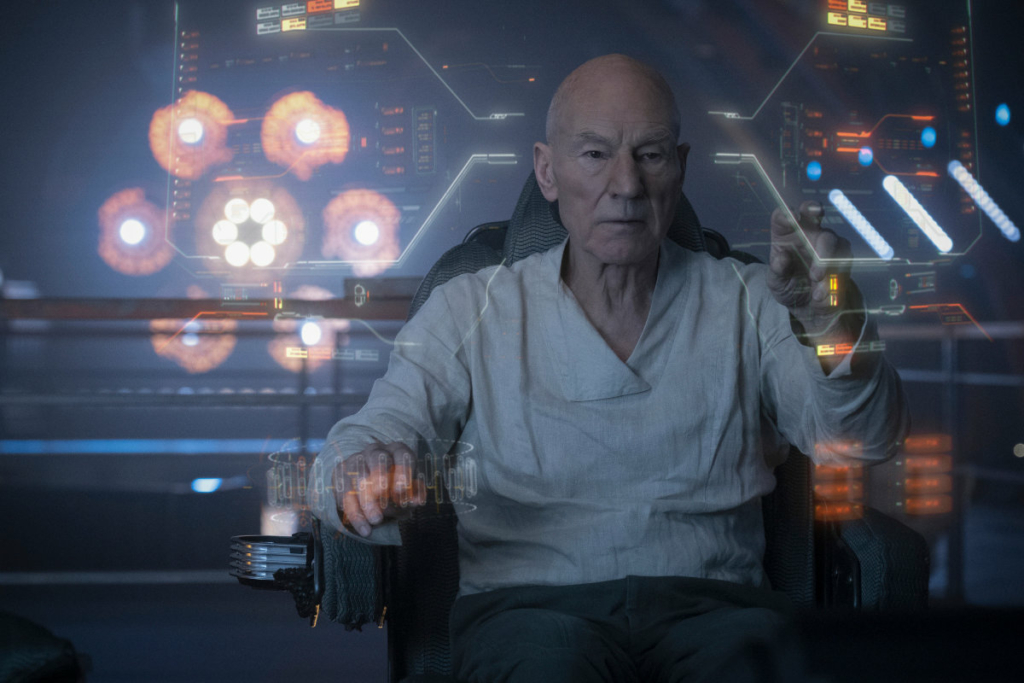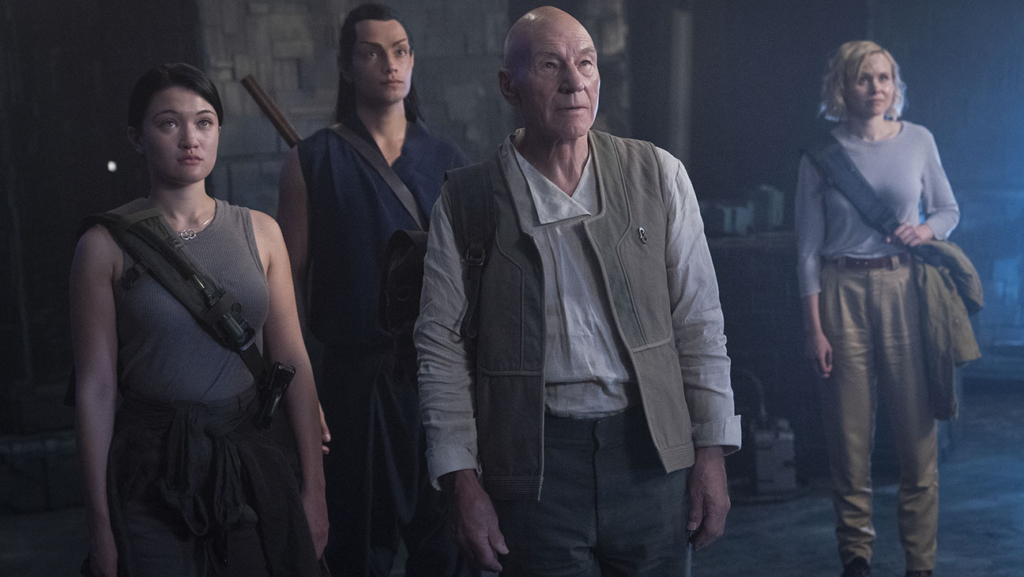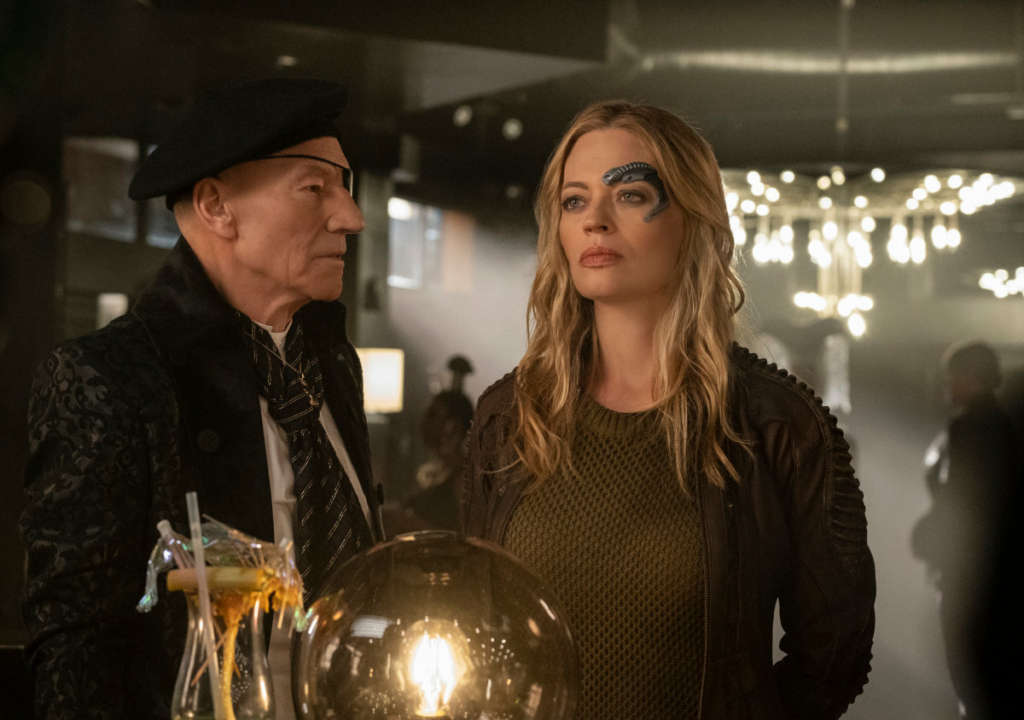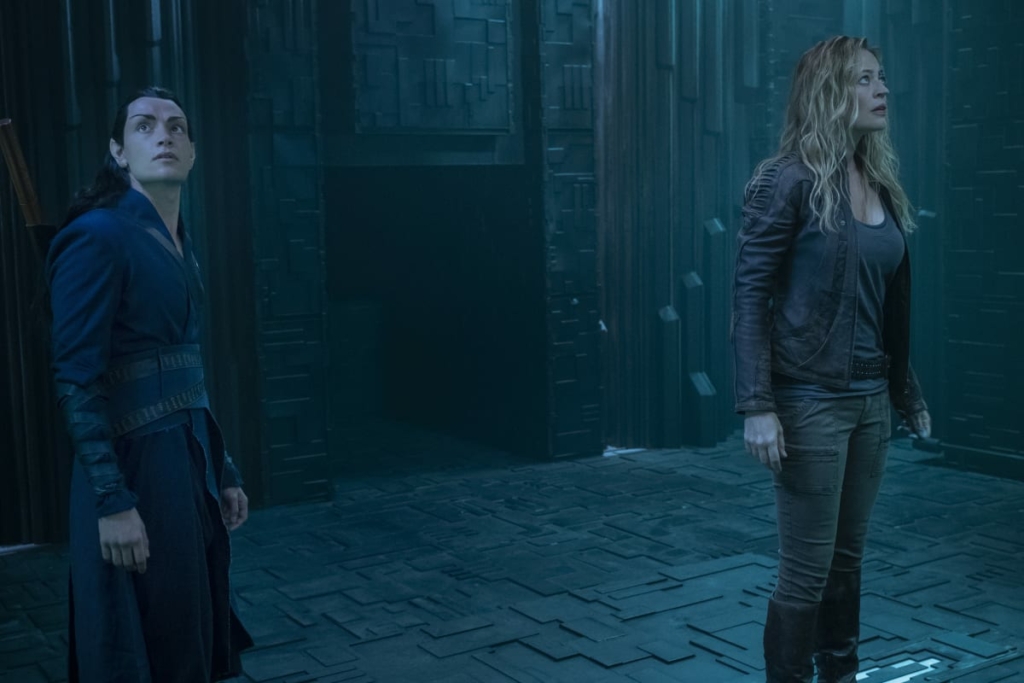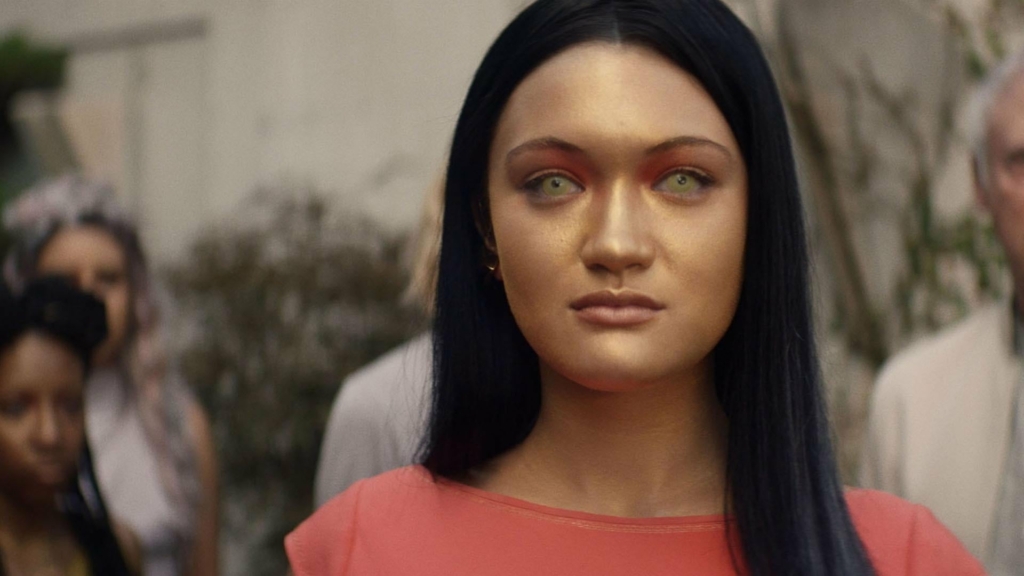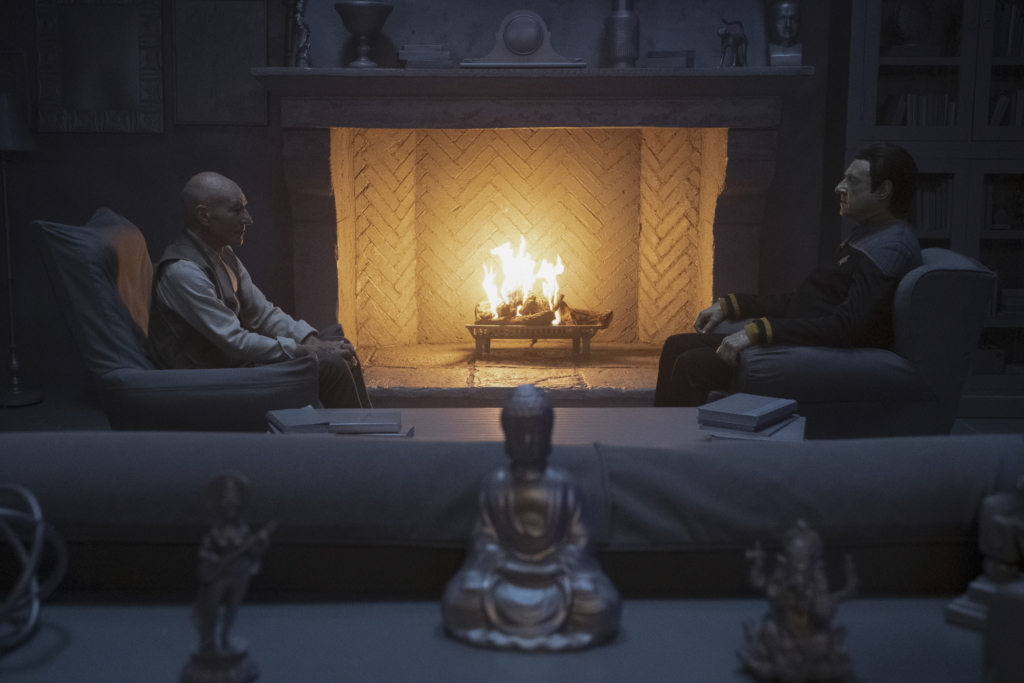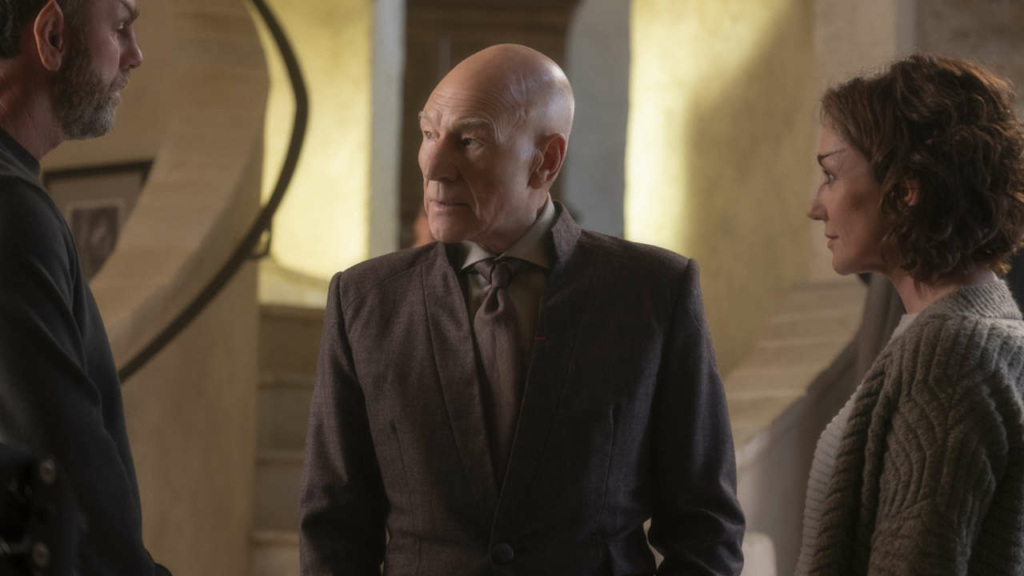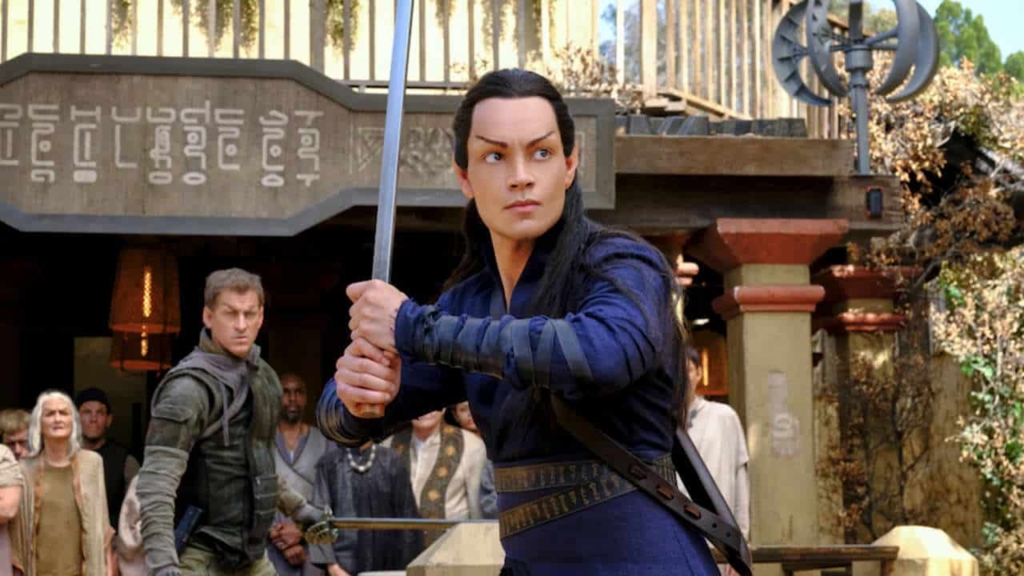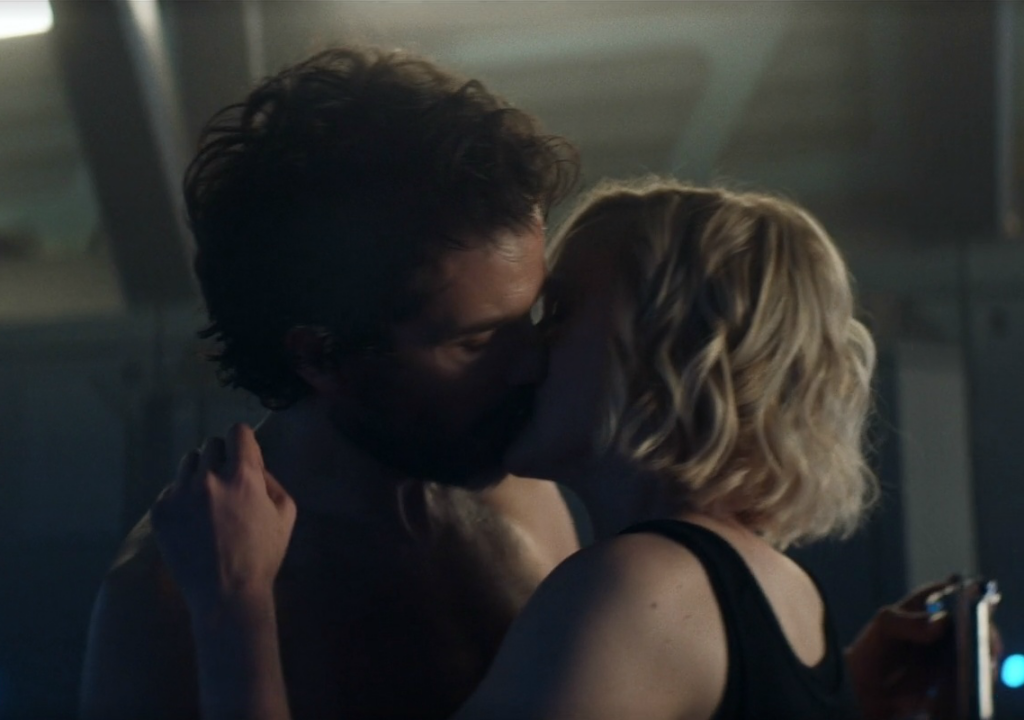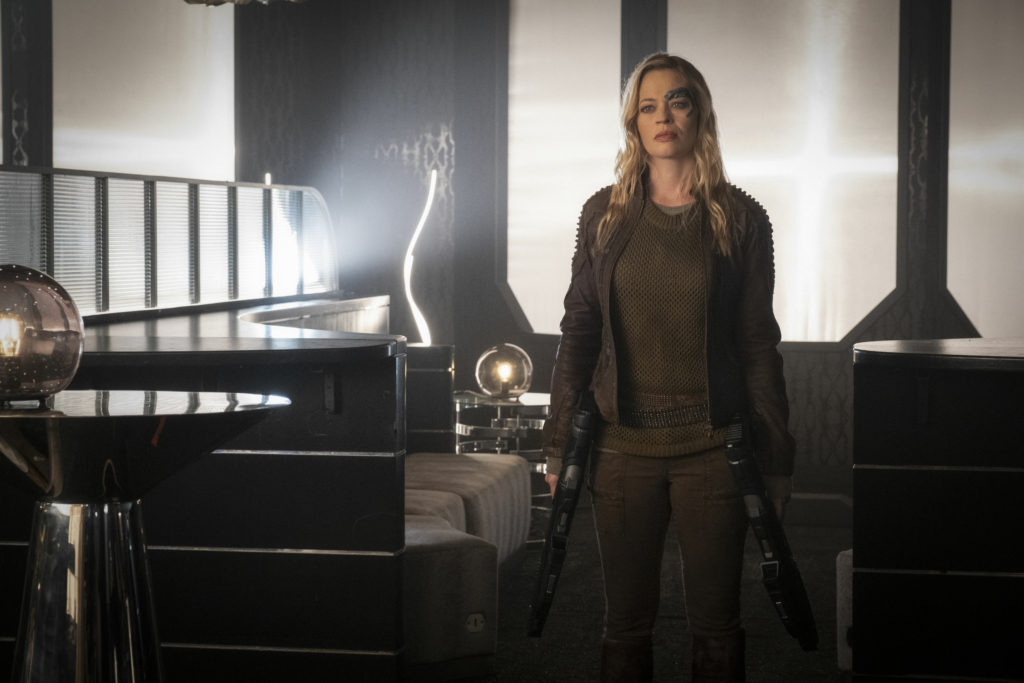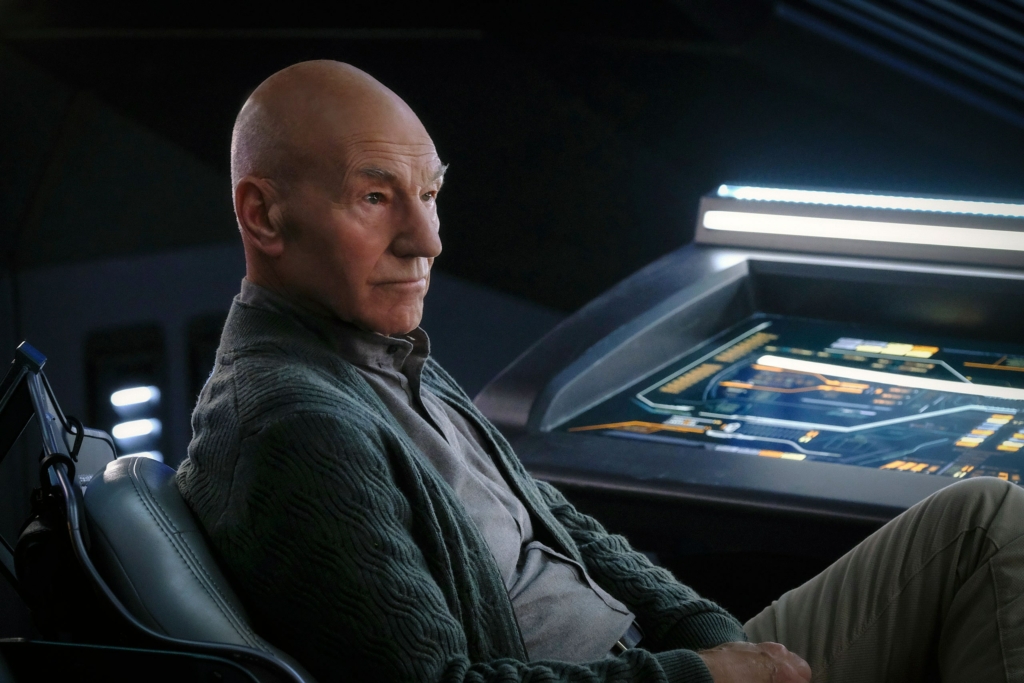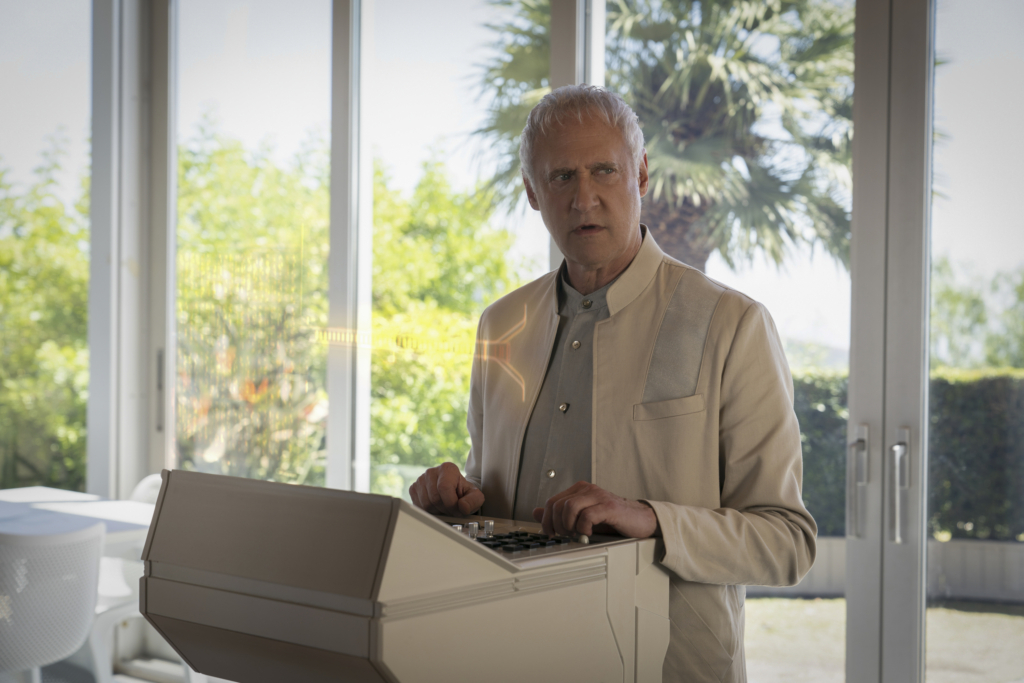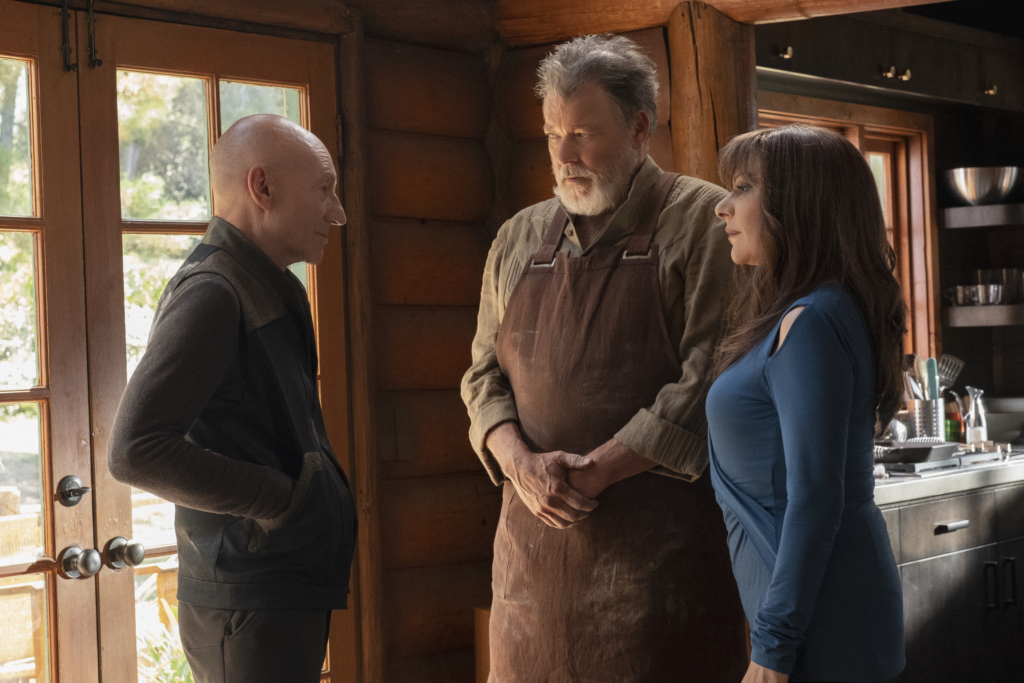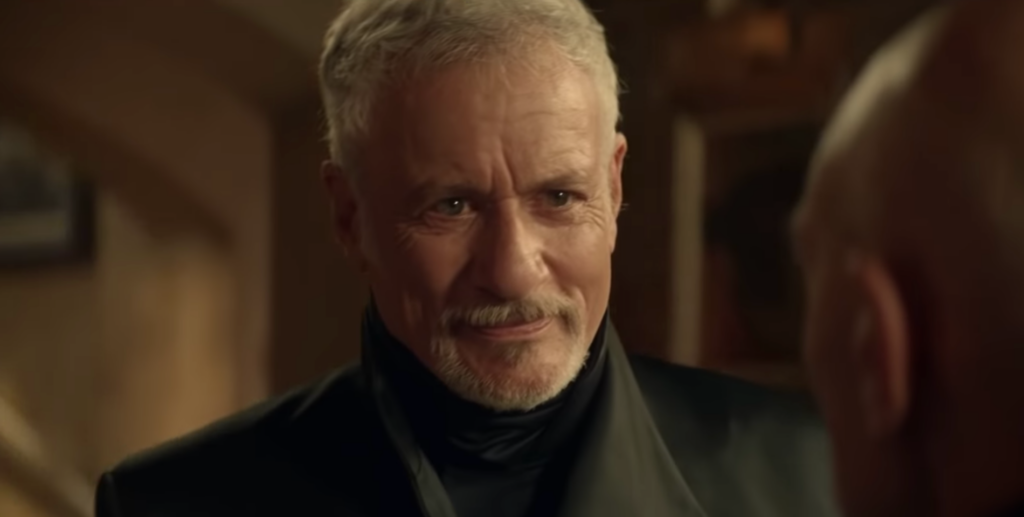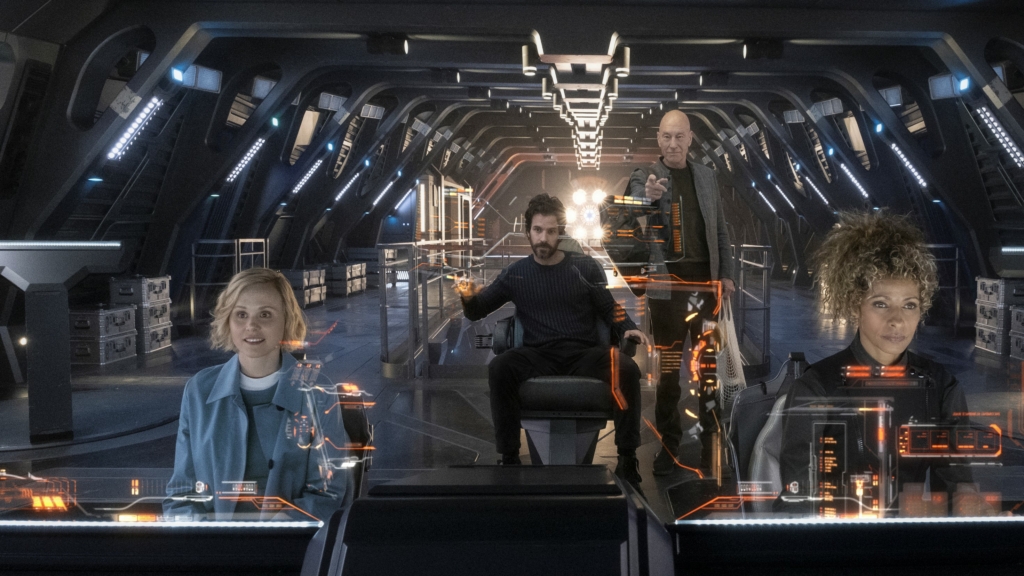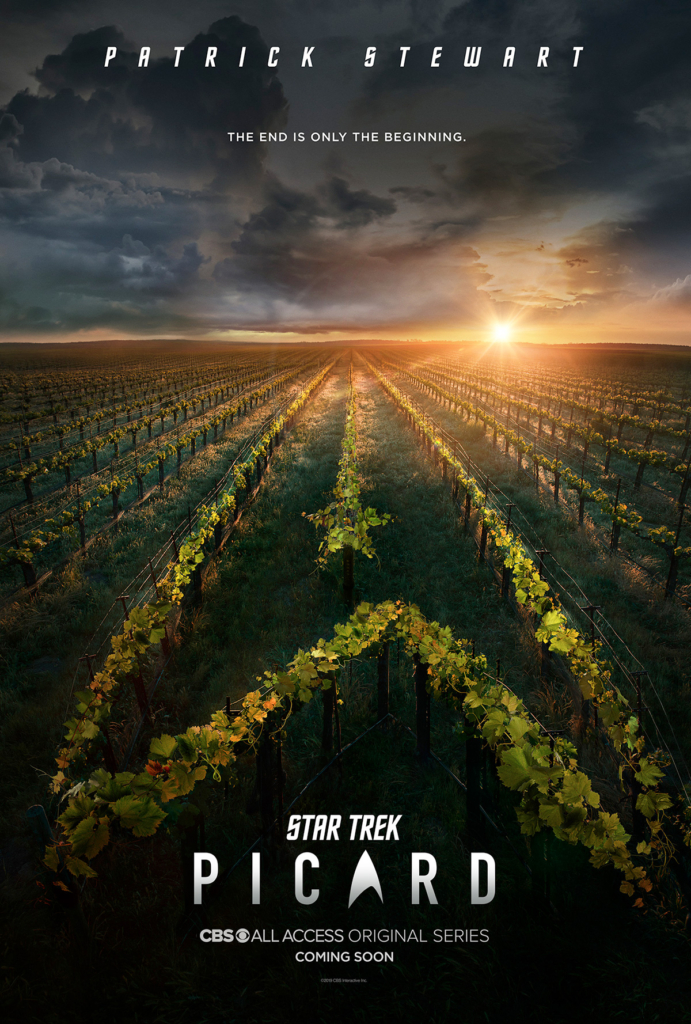Star Trek: Picard Season One – Perfect is the Enemy of the Good
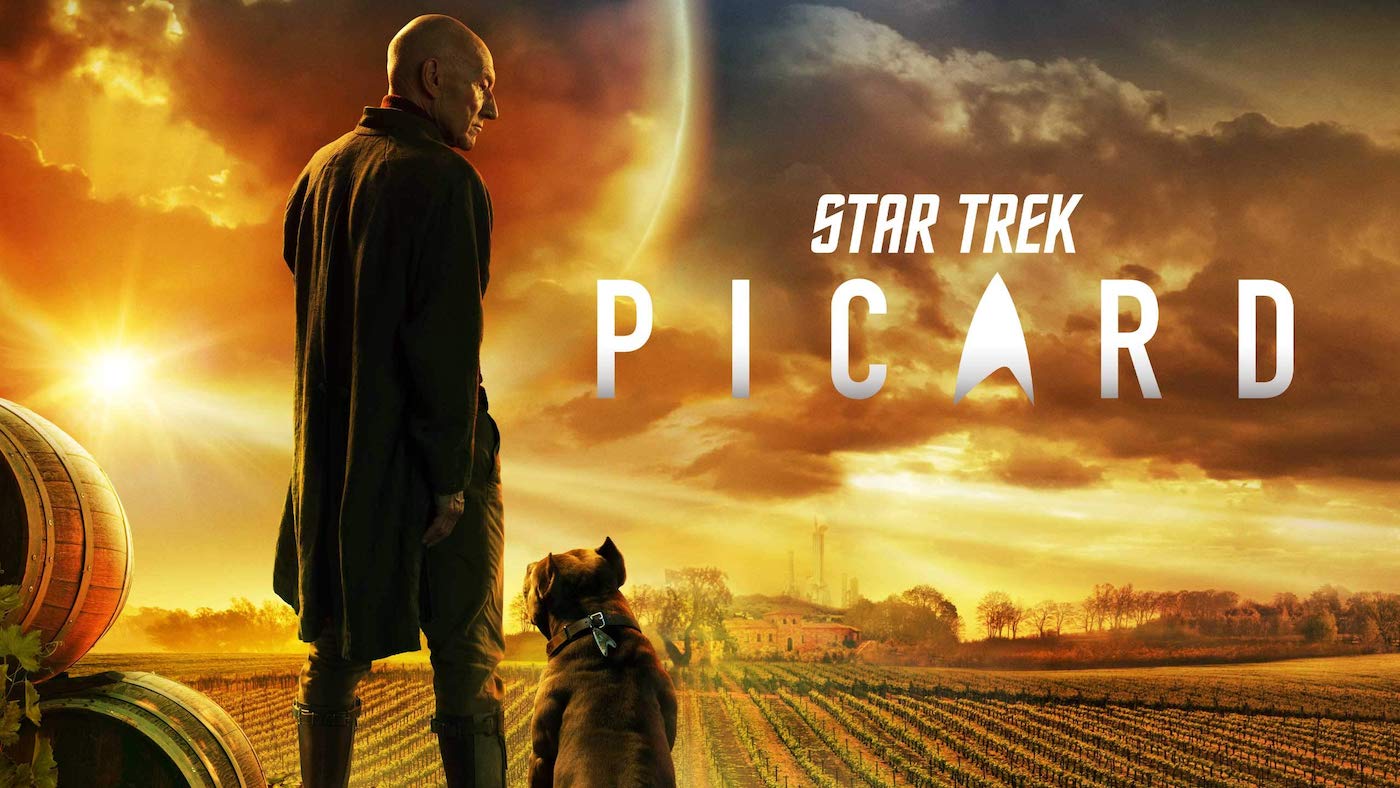
Star Trek: Picard is about to start its second season. Time to recap season one!
In early 2020 the Star Trek franchise saw the return of one of its most beloved characters: Jean-Luc Picard. Previously, Sir Patrick Stewart played the role of the diplomatic captain of the Enterprise for seven seasons of Star Trek: The Next Generation and across four major motion pictures.
The assumption was that Stewart’s (and, thus, Picard’s) tour of duty was over after that. But then one year at the Star Trek: Las Vegas convention, Stewart stepped onto the lip of the stage and announced that, together with author (and show-runner) Michael Chabon, he would return to the role of Jean-Luc for a new series that would eventually be titled Star Trek: Picard.
It’s been two years since the ten-episode first season aired. With the second season about to begin, it’s time to look back on what happened in season one. What worked? What did not work? And what questions remain unanswered?
Picard’s Not My Dad
Full transparency here: I was desperate to love Star Trek: Picard. Like a lot of people, Star Trek: The Next Generation was my introduction to the world of Star Trek. That show and those characters hold a very dear and special place in my heart. They were the first characters I fell in love with. That show was baby’s first morality play. In short: it taught me how to be a person.
I was also excited because I got to watch this new show with the person I watched TNG with all those years ago: my dad. The show was our first mutual obsession and I never dreamt we’d get a second chance to love Picard anew. So, I presented my dad with a challenge: no matter what turns the show takes, let’s find a way to love it for what it is.
We failed. By the end of those first ten episodes the COVID-19 pandemic had taken over our lives. We found ourselves, two curmudgeonly old people, griping over the phone about what a disappointment Star Trek: Picard had been for us.
I haven’t re-watched any episodes of the show’s first season until now. Do I feel differently about it two years out? Before I answer that, let’s remind ourselves of what Star Trek: Picard‘s first season was about.
To Boldly Recap
Star Trek: Picard‘s first season arc is culled from an unexpected place: the 2009 Bad Robot Star Trek reboot movie. We found out in that film (and it’s comic book prelude “Countdown”) that Romulan space was unexpectedly destroyed. The survivors are left helpless and traumatized.
Star Trek: Picard picks up years after that event. We learn that Picard himself lobbied for the Federation to help the Romulans. Starfleet begrudgingly agrees to the mission, but action is cut short when, without warning, androids (or “synths” as they are called on the show) on Mars suddenly revolt. The Utopia Planitia shipyards on Mars are destroyed, synths are banned, and the Romulan rescue mission ends.
Picard’s first season picks up years after those events. Picard has quit Starfleet and is now cared for by two former Tal Shiar Romulans at his chateau on the grounds of the Picard family vineyards. He also has a dog named “Number One”. Adorable.
Picard’s retirement is cut short when a woman named Dahj Asha shows up to his home. She is under threat from mysterious forces. Dahj is an android, a fact she has only just discovered. She’s not just any android – she is the “daughter” of Picard’s long-dead best friend Data.
Picard takes it upon himself to help Dahj, but she is unexpectedly killed by what turns out to be Romulan agents. Star Trek: Picard season one is the story of Picard finding out where Dahj comes from, why she was killed, and what all this has to do with the Romulans and the synth attack on Mars.
Act One: Earthbound
The first three episodes are set on Earth. While there, Picard finds out there’s something called the Zhat Vash which are basically Romulan boogey men. He also learns that the Romulans have a preternatural fear of artificial life but the reasons for this are (as yet) unknown. And most importantly, Picard finds out that Dahj has a twin sister named Soji who is not on Earth. Slightly related: Picard is dying of Irumodic Syndrome, a neurological disease we found out about in the TNG finale “All Good Things”.
Picard needs a new ship and a new crew. So let’s talk about those folks very quickly:
Raffi Musiker is Picard’s former first officer from his “save the Romulans” days. She lost her commission, her family, and her psychological well-being after Picard quit Starfleet over the synth ban/cancelation of saving the Romulans. Raffi is addicted to a drug called “sneakeleaf”. She believes in a number of Romulan-related conspiracy theories. And she hates Picard for abandoning her.
Cristóbal “Chris” Ríos is the captain of a ship called La Sirena. Raffi connects Picard and Ríos together for the mission. Ríos has a bunch of holographic crew members who all look like him but have different accents. He also has a mysterious past involving a former Starfleet commission and a long-dead captain he loved like a father.
Dr. Agnes Jurati is Earth’s leading cyberneticist which is worthless because synths are banned. She volunteers to help Picard find and save Soji, but she’s concealing some pretty serious motivations.
Act Two: A Frenchman, A Romulan, And A Borg Walk Into A Bar
The crew of the La Sirena head to Free Cloud to save Earth’s other best cyberneticist (and Soji’s “father”) Bruce Maddox. Bruce reveals that Soji is on a former Borg Cube run by the Romulans called “The Artifact”. We find out Agnes used to date Bruce. We also find out Agnes shared a mind meld with a member of the Zhat Vash named Commodore Oh. Whatever Agnes saw drove her to madness and she kills Bruce.
Meanwhile, Soji is on board the Artifact trying to help the Ex-Borg (dubbed Ex-Bs) find a new life. She works with a former Borg named Hugh who is an old friend of Picard’s from the TNG days. Unfortunately, Soji is dating a Romulan named Narek. Narek knows Soji is an android and is manipulating her to try and find out where her home world is. Narek also has a sister named Narissa who is a real turd and that’s all you really need to know about her.
Picard et al get to the Artifact just as Soji learns the truth of her origins and accidentally helps Narek. Hugh helps Picard and Soji escape the Artifact so they can get Soji home and save the other synths from the Romulans.
Just Two More Things
There are two characters (one new and one old) we meet in the process of getting us from Point A to Point B. The new one is a young Romulan named Elnor. Elnor was raised by a group of warrior nuns called the Qowat Milat who take on lost causes. Elnor was abandoned by Picard as a child but still takes on Picard’s cause.
The other character is everyone’s favorite Borg, Seven of Nine from Star Trek: Voyager. Seven is a member of a group called the Fenris Rangers who help people in need. She is very mad because a woman named Bjayzl kidnaps former Borg and strips them for parts. Bjayzl did this to a young Borg named Icheb who just so happens to be the closest Seven has to a son.
While everyone else leaves the Artifact, Elnor and Seven stick around in order to take it over from the Romulans and kick a little ass. Sure, why not?
Act Three: Welcome To Synth Paradise
Once Soji gets to her home world all her old memories return. Bruce Maddox did create a bunch of new synths with a little help from Altan Inigo Soong, son of Data’s creator Noonian Soong.
The memory the Zhat Vash placed in Jurati’s mind tells of a past event where artificial life caused Armageddon for almost all biological life. In fact the Zhat Vash caused the synth ban because they are so afraid of synths destroying all life.
However, one of the synths decodes the message and discovers an underlying message. Synths are always historically systemically oppressed by their biological creators. Outside of normal space there are powerful synths waiting for a signal to appear, save the current crop of synths, and destroy biological life.
The synths, including Soji, decide to send the signal. Meanwhile, the Romulans are on their way to kill the synths. And in the middle of it all is the crew of the La Sirena led by Picard who is now actively dying.
Picard Dies (Technically) To Save All Life
As Picard’s Irumatic Syndrome fries the last of his brain cells, he manages to slow the attack on the Synth home world while convincing everyone to stand down. Soji cancels the signal to the Deadly Synths of Death and the Romulans chill when a fleet of Federation starships turn up.
Picard dies. Kinda. We find out there’s a synth golem and Picard’s memories and consciousness are transferred into it before he can die proper. We find out that Data’s consciousness (which was used to create the synths) is still alive. Data and Picard have a nice conversation inside of what is basically Data’s positronic net in a jar. Data and Picard admit they love each other. It’s very nice. Then Data tells Picard he’s ready to die.
The season ends with Picard honoring Data’s request for death. The synth ban is lifted. Everyone, including Soji and Seven, board the La Sirena for adventures unknown.
To Boldly Review
At long last I can finally answer the initial question. Two years on, do I feel any differently about the first season of Star Trek: Picard?
Yes. Not as much as I would have liked, but yes.
The biggest thing I was shocked to discover is how much I like the first three episodes of Picard. Introducing Dahj and Soji is exciting. Learning about the Zhat Vash and the synth ban is intriguing. And assembling Picard’s new motley crew made me feel like there were exciting adventures in store.
Then the rest of the season happens. There are good things and bad. The second act, especially, remains a major sticking point. Most notably, this is where Narek and Narissa really get fleshed out. And, look, I comprehend that villains are supposed to be characters the audience root against, but good grief! Narek is pitched as a man who feels he has no choice, but he has a choice. He chooses to manipulate, gaslight, and attempt to murder a woman he purports to love.
There’s also this weird incest vibe between Narissa and Narek. Yeah, I watched Game of Thrones, too. No thank you. No twincest crossovers in Star Trek, please.
The biggest thing I still notice is the weird tonal shifts the show takes. It’s especially noticeable in the episode “Stardust City Rag”. Part of the episode involves Picard dressing like a goofy, French pirate. Ríos dresses like a 1970s pimp! But also Picard and Seven have a very deep conversation about the long-term trauma of Borg assimilation. And also Seven commits some very serious murders. On there on, these aspects are fine. A scene apart from one another, they are two tastes that do not taste great together. Like orange juice and tooth paste.
Absolute Candor: I Don’t Care About Elnor Or The Qowat Malat
In theory, the Qowat Malat make a lot of sense as a foil to the Zhat Vash. Romulans are always sneaky and secretive and the Zhat Vash are the most extreme form of that. The Qowat Malat are all about “absolute candor” making the two groups natural enemies.
Elnor as a character also makes a lot of sense on paper. Picard abandons the Romulans once Starfleet ditches the project of saving them. Leaving a child behind gives Picard a sort of resentful child figure he needs to earn the love of. And Elnor should act as a reminder of Picard’s inability to accept anything other than absolute success.
Instead, Elnor is played as a bit of a rube. He’s really sheltered except for the part where he’s a deadly assassin. Like Data, Elnor doesn’t get jokes and needs to have basic human stuff spelled out for him. Unlike Data, Elnor has no likable traits whatsoever.
Jurati and Ríos: The Couple No One Asked For
Agnes Jurati killing Bruce Maddox really bothered me the first time I watched this season. However, upon this re-watch, I actually kind of liked it. There is a nice little trick I appreciate on this second viewing. Jurati kills a faceless Romulan on Earth early on. This opens up the possibility of her killing in general, even though it was an accident. That’s part of why she’s able to kill Maddox a few episodes later.
That being said, I still bristle at the way Jurati and Ríos wind up together. “Hollow. Hopeless. Lonely. Afraid.” This is how Jurati describes her emotional state after she secretly kills Maddox. After that Ríos has sex with her anyway. It’s an ugly choice and it’s never given the weight that an ugly choice like that ought to have.
Seven of Why The #$%! Are You Here?
Seven of Nine is a great character. Star Trek: Voyager is a great show in no small part because Jeri Ryan brought so much depth to Seven of Nine. And it was incredibly gratifying just seeing her back in the world of Star Trek (and no longer stuck dressed like a sex bot). That being said, the show doesn’t know what to do with her.
The individual pieces of her story are interesting. Joining the Fenric Rangers to help people sounds like a spin-off series I would watch. Losing Icheb and seeking vengeance? I mean… sure! That is a major bummer, but it’s interesting. And Seven having to rejoin the Borg Collective as a kind of temporary Queen? Dude. That’s cool!
How Seven relates to the Star Trek: Picard story, however, is a mystery to me. It’s cool to hear her and Picard talk about the trauma of being assimilated, but it’s not really connected with the plot. And if you know anything about the Voyager fandom, you know that Seven being queer has been unofficial canon for decades. Imagine how infuriating it was to see this made official by having Seven and Raffi hold hands in the final seconds of the season. What? Why? Raffi and Seven have one scene together prior to this. If you’re going to put them together, you have to set that up!
And besides, Hugh was right there! He is a TNG character! Why not just use him? Instead all he gets is killed off and my behind is still chapped about it!
The Diminishing Returns of Picard-Brand Moralizing
One of the best things about Star Trek: The Next Generation is the way it takes a strong, moral stance and stands by it. This is especially true for Captain Picard who gives some of the best, forthright speeches in the history of television.
However, Picard as moral leader doesn’t work quite as well on Star Trek: Picard. In the finale, Picard still defends Starfleet as the best hope for the synths. Starfleet is explicitly in the moral wrong by ditching the Romulans and banning synths. In fact, it’s Starfleet’s actions that land the synths in the mess they find themselves in!
In the end Picard is right. Soji cancels the call to the Evil League of Robot Evil and Starfleet does back them. The Romulans even chill out! However, this all feels unearned. It feels like everything happens because it serves the plot and not because it makes internal, narrative sense.
Theory Based On The Data
The show-runner for Picard‘s first season is Michael Chabon. Chabon is not returning for season two. Something else that is relevant: Patrick Stewart only agreed to return as Picard if he had a lot of creative control. Similarly Brent Spiner only returned because Stewart asked him to. However, it’s well known that Spiner doesn’t want to play Data anymore. If you’ve been to a convention where Spiner gave a Q&A, you have heard him say there are no Data stories left to tell many times. The man is statistically adamant on this point.
The last time Stewart and Spiner had this much creative control was for the final TNG movie Star Trek: Nemesis. Spiner even has a writing credit on the film. In short, Nemesis is a Wrath of Khan retread and is notoriously terrible.
There is nothing in Trek canon that even remotely hints at Soong having a human child. However, Spiner didn’t want to play Data anymore, so Altan Inigo Soong exists, I guess!
Data does return, but he returns to die in a way that makes it so fans can’t really ask Spiner about Data anymore. And while the speech Data gives about the mortality of human life making things precious is touching and well-performed, it really comes out of left field. The best explanation based on the Data present (get it?) is that Spiner only agreed to return if Data was permanently written out.
Getting Jazzy With The Rikers!
At the end of act two and before act three begins, the entire show comes to a screeching halt. This happens entirely for nostalgia purposes. Picard and Soji travel to a planet called Nepenthe where they hang out and eat pizza with Deanna Troi, Will Riker, and their kiddo Kestra.
I like this episode a lot. Sure, it doesn’t have to do with a gosh darn thing, but it’s just so nice seeing Riker, Troi, and Picard together again. You can really tell that these actors all love each other very much. This is the closest Star Trek: Picard gets to feeling like an episode of TNG.
In fact this episode reminds me of a TNG episode called “Family” where Picard reunites with his brother after being assimilated by the Borg. Both stories find Picard at a crossroads and both show how Picard’s family (biological or chosen) know him better than he knows himself.
There’s a ton of references to TNG‘s past which make narrative sense and there’s a lot of heart. I wish more of the season felt like this episode.
Was Q Secretly In Picard Season One?
We know that Star Trek: Picard season two involves the return of Picard’s greatest frenemy Q. However, is it possible that Q was in some way responsible for the events of the show’s first season? Consider the following:
- Picard has a number of pointed dreams which lead him to Dahj, Soji, and the synth home world. Who has a history of guiding Picard through visions? Q does!
- Will and Deanna’s daughter Kestra gets help finding Soji’s world from a mysterious old man we never see named Captain Crandall. All we know about him is that Will and Deanna are unimpressed with him even though he’s traveled a lot. What if this was Q giving Picard a little nudge – as he does from time to time!
- At some point in the past, Ríos meets another synth who looks like Soji. That synth is accompanied by an older male figure who is only known as Beautiful Flower. Our understanding is that Flower is sent out the airlock. We never see or hear about this character ever again but the way he’s mentioned makes him seem important. Once again, that could have been Q testing humanity — a thing he loves doing!
These moments might be loose threads that lead to nothing. On the other hand, it would be nice if Q’s return was cleverly foreshadowed.
To Sum Up
Star Trek: Picard season one is a classic example of a whole being less than the sum of its parts. There are so many excellent, individual moments. We didn’t even touch on the conversation between Picard and Hugh which is beautiful scene work. I still can’t believe they killed Hugh after they set up this brilliant arc of him rescuing the ex-Borg from subjugation.
The whole first season is like this. Ríos and his holo-duplicates are a funny idea, but they don’t fit into the larger narrative. Seven of Nine is well written but she doesn’t fit into the larger narrative. The return of the Rikers and Data’s final goodbye are all so good, but how do they connect? Don’t ask me. I’m just a recapper.
I’ll say this: having re-watched this season I do have a solid sense of who most of these characters are (not you, Elnor) and I’m looking forward to seeing how Q mucks up their lives. In the end, I am much closer to succeeding at my original mission statement. I love a lot of season one for what it is, but the nonsensical parts remain as bewildering as ever.
Star Trek: Picard returns for season two on March 3.
Until then this is your humble recapper signing off. Computer: end program.

